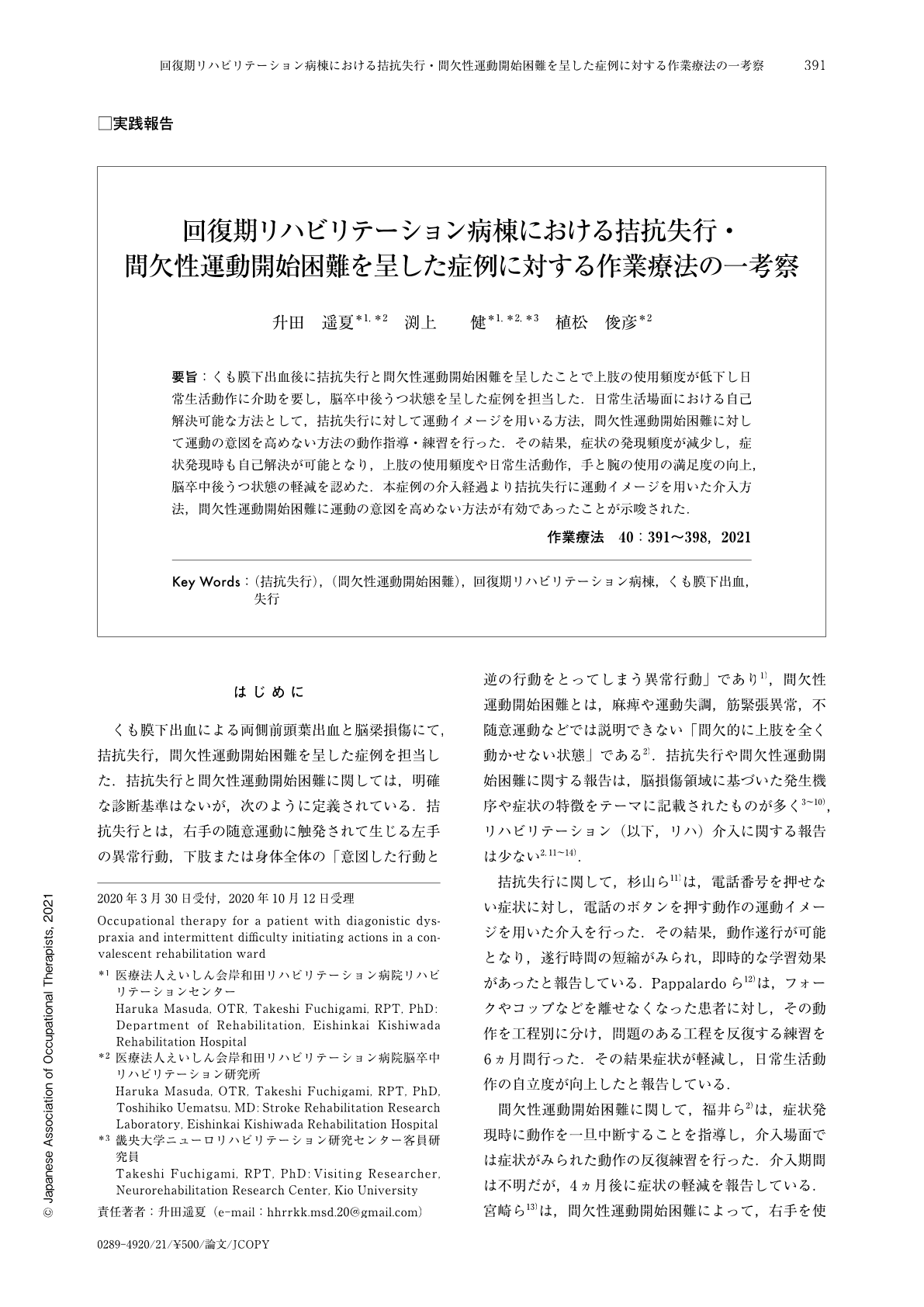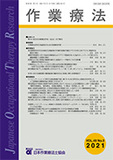Japanese
English
- 販売していません
- Abstract 文献概要
- 1ページ目 Look Inside
- 参考文献 Reference
要旨:くも膜下出血後に拮抗失行と間欠性運動開始困難を呈したことで上肢の使用頻度が低下し日常生活動作に介助を要し,脳卒中後うつ状態を呈した症例を担当した.日常生活場面における自己解決可能な方法として,拮抗失行に対して運動イメージを用いる方法,間欠性運動開始困難に対して運動の意図を高めない方法の動作指導・練習を行った.その結果,症状の発現頻度が減少し,症状発現時も自己解決が可能となり,上肢の使用頻度や日常生活動作,手と腕の使用の満足度の向上,脳卒中後うつ状態の軽減を認めた.本症例の介入経過より拮抗失行に運動イメージを用いた介入方法,間欠性運動開始困難に運動の意図を高めない方法が有効であったことが示唆された.
This patient presented with diagonistic dyspraxia and intermittent difficulty initiating actions due to subarachnoid hemorrhage, resulting in decreased arm use, and inability to independently perform activities of daily living. Occupational therapy intervention included motor imagery, as well as intervention that does not increase intention of movements. Consequently, the patient's condition improved, and the intermittent difficulty in initiating actions was reduced. When the symptoms appeared, the patient responded well independently. The amount of arm use increased, as did the ability to independently perform activities of daily living. Furthermore, improvement in satisfaction with arm use and post-stroke depression were also noted. The findings suggest that occupational therapy including both methods are effective for treating diagonistic dyspraxia and intermittent difficulty to initiating actions.

Copyright © 2021, Japanese Association of Occupational Therapists. All rights reserved.


